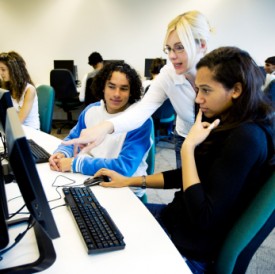 In my last post, we looked at the differences between the fixed and growth mindsets described by Carol S. Dweck in her research and latest book, Mindset: The New Psychology of Success. In this post, we’ll look at a bit of the neurobiology at work as it relates to mindset.
In my last post, we looked at the differences between the fixed and growth mindsets described by Carol S. Dweck in her research and latest book, Mindset: The New Psychology of Success. In this post, we’ll look at a bit of the neurobiology at work as it relates to mindset.
In their 2008 study, "Motivation to do Well Enhances Responses to Errors and Self-Monitoring", Bengtsson, Lau and Passingham discuss how humans are unique in the animal world in that only we have the ability to reflect on our own performance.
Their research studied how self-motivation affects tasks that use working memory. They looked at how the members of each of two groups performed on a memory task. The first group was told that their cognitive abilities were actually being measured and that these abilities were related to intelligence. The other group was simply told that by participating, they were helping the researchers to develop an effective test.
Their results showed that the first group was substantially more motivated to do well than members of the second. In addition, MRIs of subjects showed that activity across multiple areas of the brain in the motivated group was extensive when making errors. Simply put, Bengtsson, Lau and Passingham’s experiment demonstrated that when one is motivated to succeed, making errors is perceived as being "in conflict with one’s ideals for oneself." From the student’s point of view making errors is something they can accept since they believe that they can learn from experience and improve their abilities. This feedback when errors occur does not align with their perception of themselves as good learners, however, so they will consistently strive to be more successful.
This small piece of information offers a great insight for us as educators. As we work with students, we can help them understand the goals and reasons behind a learning experience as well as the content or skills that represent the focus of the lesson. The more we do this, the more we can literally stimulate their brains on a neurobiological level to optimize each student’s internal learning environment.

